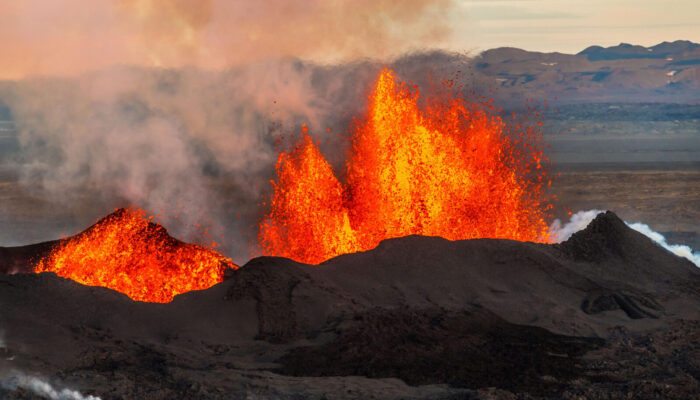
In this week’s blog, Garima Shukla, ECS representative of the Geodynamics Division and PhD student at the Indian Institute of Science Education and Research, Bhopal, India, working with Dr. Jyotirmoy Mallik, discusses her research involving fieldwork and statistical calculations. Her research also delves into rock magnetism and palaeomagnetism to unravel the longstanding enigmas surrounding the magma origins of the Deccan Traps in the Indian Peninsula.
Lift me up: the magma pathways from deep below to the surface
Magma is generated in the lithosphere and/or asthenosphere and can subsequently ascend to the surface through a network of interconnected shallow crustal magma conduits, including dykes, sills, and magma reservoirs (see references in Magee et al., 2018). Dykes serve as primary conduits for transporting magma from its source to the Earth’s surface and are indicators of mafic magmatic activity related to continental rifting and/or plume events during flood basalt emplacement (Ernst et al., 2019).
The source of these dykes can vary: they can be emplaced directly from a deep magma source like the asthenosphere in a subduction zone setting (Mir et al., 2013) or from several shallow magma chambers located in the lower crust or at the crust-mantle boundary, that can be fed by a deeper and larger magma source (Gudmundsson, 2000). This pair is called a double magma chamber. Many of the dykes from deep crustal magma chambers can be arrested and never reach the surface to feed an eruption (Gudmundsson, 2006). In addition, the magma pressure required for dyke emplacement decreases from a deeper to a shallower source, often reflected in the overall dyke dimensions (Ray et al., 2007).

Sitting on the Deccan felt like stepping back in the time. Dive into my journey and Join me on Linkedin
A Continental-scale sea of fire: the Deccan Continental Flood Basalt
The Deccan Continental Flood Basalt is one of the major continental flood basalts found at present-day. It was emplaced around 65 Ma in the Indian peninsula covering an area of ~500,000 km2 with a total outpouring of ~1.3 × 106 km3 basaltic magma (Figure 1). There are three major dyke swarms of the Deccan Trap, namely, the ~ ENE-WSW trending Narmada- Satpura-Tapi (N-S-T) dyke swarm, the Nasik-Pune dyke swarm (randomly oriented), and the ~ N-S trending Western Coastal dyke swarm (Vanderkluysen et al., 2011). Many questions surrounding the magma source and the dykes are unclear:
What is the depth of the magma reservoirs feeding the Deccan Continental Flood Basalt (DCFB)? Whether the magma reservoirs are shallow crustal or deep? Are there multiple connected small magma reservoirs in the DCFB?
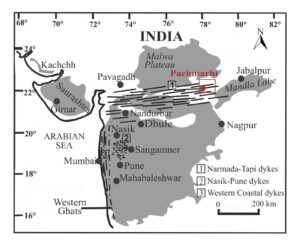
Figure 1: Map of Central-Western India with the present extent of the Deccan flood basalts with three major dyke swarms. The dyke trends of major dyke swarms and localities are also mentioned (modified from Sheth, 2005 and Shukla et al., 2022).
Focus on the Narmada- Satpura-Tapi (N-S-T) dyke swarm in Pachmarhi
My PhD work focuses on the N-S-T dyke swarm of Deccan, particularly around the Pachmarhi town in Madhya Pradesh, marking its Eastern end (location indicated in Figure 1). We went to the field and examined the characteristics of doleritic and basaltic Pachmarhi dykes (Figure 2); such as length, thickness and orientation. These dykes have intruded the Lower and Upper Gondwana Formations of the Satpura Gondwana Basin (Sheth et al., 2009). The dykes exhibit notable variability in length, typically shorter than those in the Dhule-Nandurbar region of Maharashtra. The Pachmarhi dykes display a range of thicknesses and predominantly orient N82°E, consistent with the Narmada-Son Lineament (NSL) and perpendicular to the N-S trending paleo-extension.
Magma Overpressure and Source Depth analysis for Pachmarhi dykes
We computed the dyke dimensions on the field using a scaling relationship with the elastic theory of fracture nucleation and propagation and then used these dimensions to calculate magma overpressure and magma source depth as a function of dyke aspect ratio and elastic modulus of the country rock (look into the Equation 5 and Equation 6 in Shukla et al., 2022). The estimated magmatic overpressure for the Pachmarhi dykes varies in the range of 5.05 MPa to 71.2 MPa and the average depth of the magma chamber for the Pachmarhi dykes is 11.2 km.
Understanding Magma Emplacement Mechanisms in the Deccan Traps
We dug into where the magma might have come from for the Pachmarhi and Nandurbar-Dhule dykes in the Deccan area. When comparing the depths of emplacement of the Eastern and Western sides of the N-S-T dyke swarm, we found that the Nandurbar-Dhule dykes should have been emplaced at shallower depths than the Pachmarhi dykes at the upper crustal level (Figure 3).

Figure 3: Scatter plot showing the range of magma source depth (z) versus magmatic overpressure (Po) for Pachmarhi dykes and Nandurbar-Dhule dykes.
Knowing the depth of emplacement of the Pachmarhi dykes, we explored potential scenarios for their emplacement and their implications on the larger geodynamic processes of Deccan volcanism. With the analysis of the aspect ratio (length/thickness) of Pachmarhi dykes (Shukla et al., 2022) and Nandurbar-Dhule dykes (Ray et al., 2007), we were able to confirm that the N-S-T dyke swarms exhibit numerous shallow magma chambers within the upper crust. This was also shown by gravity modelling data (Bhattacharji et al., 2004) and 3-D density modelling (Prasad et al., 2018), suggesting the presence of smaller and dense mafic magma bodies at depths of 4 to 8 km along the so-called Narmada-Tapi rift zone. This rift zone, which originated as a Precambrian tectonic feature and has been repeatedly reactivated (Choubey, 1971), serves as a weak zone and a pathway for magma eruption during Deccan Continental Flood Basalt (DCFB) events and remains tectonically active. This evidence supports the hypothesis that there are multiple interconnected small magma reservoirs in the upper crust, rather than a single large one, serving as the source for Deccan CFB episodes (Mittal et al., 2021; Figure 4). These small magma reservoirs supply magma to the surface, with each reservoir undergoing a process known as REAFC (Recharge-Eruption-Assimilation-Fractional Crystallization; Mittal et al., 2021).
Implications and Future Directions
There are two hypotheses, often depicted as competing ones, to explain the geodynamic context of the Deccan Traps. While some studies support the hypothesis of a mantle plume for the Deccan eruption (Campbell, 2005) other studies argue against it proposing that there is only rifting processes involved (Sheth, 2005). Pre- or syn-Deccan crustal extension may arise from the interaction between mantle plume activity and extensive intercontinental plate tectonics. Crustal weak zones along intercontinental rifts (e.g., the Narmada-Son-Tapi Lineament) might fracture due to such crustal extension, forming potential conduits through which the Deccan flood basalts could have been emplaced as dykes. What are the future directions of my research? Several unknowns regarding the nature of these dykes remain. I will work on rock magnetism and Anisotropy of Magnetic Susceptibility to infer the direction and sense of magma flow from the Pachmarhi dykes. This will provide insights into the number of magma chambers, the plumbing mechanism, and the possible connection with a mantle plume.
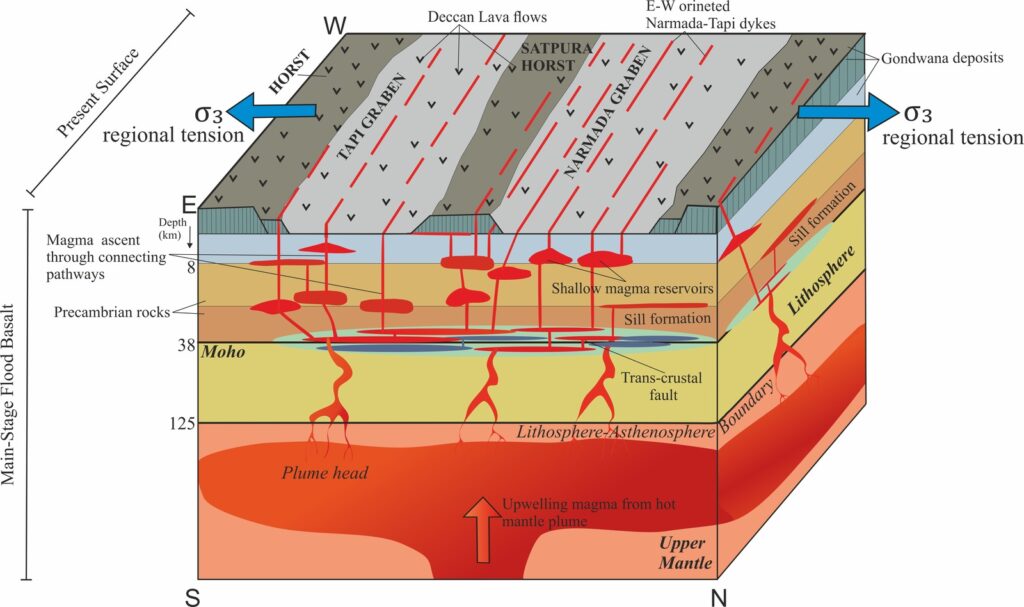
Figure 4: Main Stage Deccan Flood basalt with multiple smaller magma reservoirs interconnected through pathways and undergoing REAFC (Recharge-Eruption- Assimilation-Fractional crystallization) process (adapted from Mittal et al. (2021). Shukla et al. (2022) have concluded that Pachmarhi dykes and N-D dykes have such kind of magmatic system as the source depth of the magma chambers are supporting this particular model. The Pachmarhi dykes are oriented towards ~E-W direction perpendicular to the σ3 direction (direction of regional tension). The present surface shows Satpura horst and Narmada-Tapi graben with Deccan lava flows and dykes.
Stay tuned as we continue to unravel the emplacement dynamics of the Deccan Volcanic Province!
References Bhattacharji, S., Sharma, R., Chatterjee, N., 2004. Two- and three-dimensional gravity modeling along western continental margin and intraplate Narmada-Tapti rifts: Its relevance to Deccan flood basalt volcanism. Proc. Indian Acad. Sci. Earth Planet. Sci. 113, 771–784. https://doi.org/10.1007/BF02704036 Campbell, I.H., 2005. Large Igneous Provinces and the Mantle Plume Hypothesis. Elements 1, 265–269. https://doi.org/10.2113/gselements.1.5.265 Choubey, V.D., 1971. Pre-deccan trap topography in central India and crustal warping in relation to Narmada rift structure and volcanic activity. Bull. Volcanol. 35, 660–685. https://doi.org/10.1007/BF02596836 Ernst, R.E., Liikane, D.A., Jowitt, S.M., Buchan, K.L., Blanchard, J.A., 2019. A new plumbing system framework for mantle plume-related continental Large Igneous Provinces and their mafic-ultramafic intrusions. J. Volcanol. Geotherm. Res. 384, 75–84. https://doi.org/10.1016/j.jvolgeores.2019.07.007 Gudmundsson, A., 2006. How local stresses control magma-chamber ruptures, dyke injections, and eruptions in composite volcanoes. Earth-Science Rev. 79, 1–31. https://doi.org/10.1016/j.earscirev.2006.06.006 Gudmundsson, A., 2000. Dynamics of volcanic systems in Iceland: Example of tectonism and volcanism at Juxtaposed hot spot and mid-ocean ridge systems. Annu. Rev. Earth Planet. Sci. 28, 107–140. https://doi.org/10.1146/annurev.earth.28.1.107 Magee, C., Stevenson, C.T.E., Ebmeier, S.K., Keir, D., Hammond, J.O.S., Gottsmann, J.H., Whaler, K.A., Schofield, N., Jackson, C.A.L., Petronis, M.S., O’Driscoll, B., Morgan, J., Cruden, A., Vollgger, S.A., Dering, G., Micklethwaite, S., Jackson, M.D., 2018. Magma plumbing systems: A geophysical perspective. J. Petrol. 59, 1217–1251. https://doi.org/10.1093/petrology/egy064 Mir, A.R., Alvi, S.H., Balaram, V., Bhat, F.A., And, S.Z., Dar, S.A., 2013. A subduction zone geochemical characteristic of the newer dolerite dykes in the singhbhum craton, Eastern India. Int. Res. J. Geol. Min. (IRJGM 3, 213–223. Mittal, T., Richards, M.A., Fendley, I.M., 2021. The Magmatic Architecture of Continental Flood Basalts I: Observations From the Deccan Traps. J. Geophys. Res. Solid Earth 126, 1–54. https://doi.org/10.1029/2021JB021808 Prasad, K.N.D., Singh, A.P., Tiwari, V.M., 2018. 3D upper crustal density structure of the Deccan Syneclise, Central India. Geophys. Prospect. 66, 1625–1640. https://doi.org/10.1111/1365-2478.12675 Ray, R., Sheth, H.C., Mallik, J., 2007. Structure and emplacement of the Nandurbar-Dhule mafic dyke swarm, Deccan Traps, and the tectonomagmatic evolution of flood basalts. Bull. Volcanol. 69, 537–551. https://doi.org/10.1007/s00445-006-0089-y Sheth, H., 2005. From Deccan to rèunion: No trace of a mantle plume. Spec. Pap. Geol. Soc. Am. 388, 477–501. https://doi.org/10.1130/0-8137-2388-4.477 Sheth, H.C., Ray, J.S., Ray, R., Vanderkluysen, L., Mahoney, J.J., Kumar, A., Shukla, A.D., Das, P., Adhikari, S., Jana, B., 2009. Geology and geochemistry of Pachmarhi dykes and sills, Satpura Gondwana Basin, central India: Problems of dyke-sill-flow correlations in the Deccan Traps. Contrib. to Mineral. Petrol. 158, 357–380. https://doi.org/10.1007/s00410-009-0387-4 Shukla, G., Mallik, J., Mondal, P., 2022. Dimension-scaling relationships of Pachmarhi dyke swarm and their implications on Deccan magma emplacement. Tectonophysics 843. https://doi.org/10.1016/j.tecto.2022.229602 Vanderkluysen, L., Mahoney, J.J., Hooper, P.R., Sheth, H.C., Ray, R., 2011. The feeder system of the Deccan Traps (India): Insights from dike geochemistry. J. Petrol. 52, 315–343. https://doi.org/10.1093/petrology/egq082

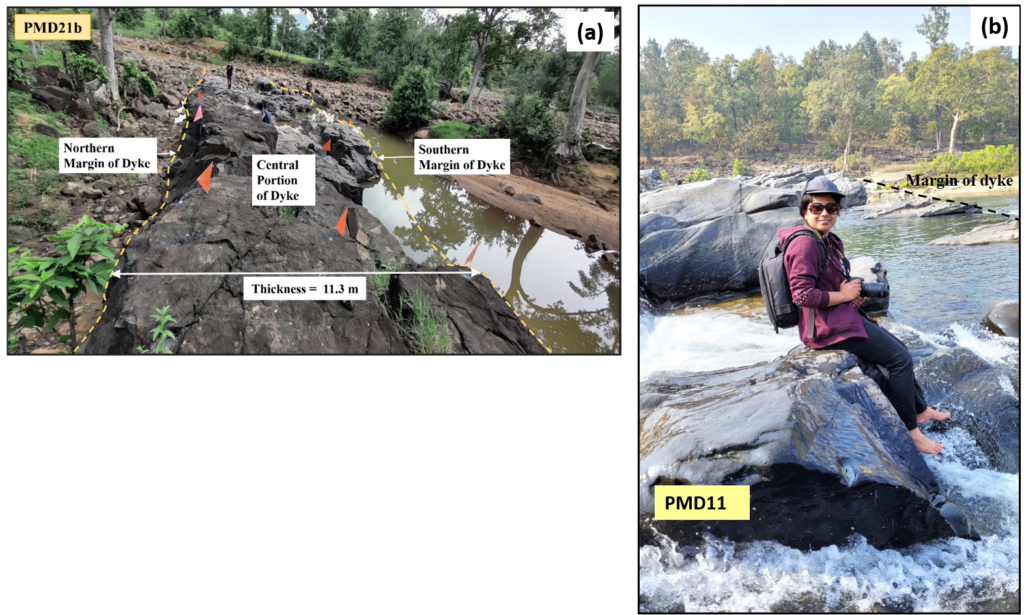
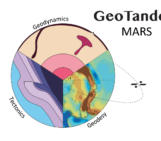

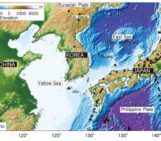
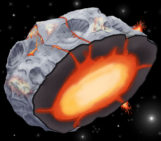
SAPTARSHI GHOSH
Nice writeup 🤗